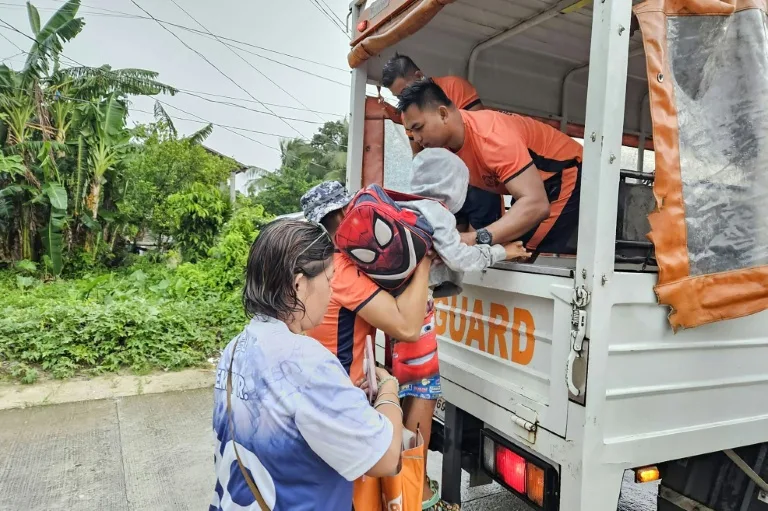
Thousands of residents in coastal communities across the central Philippines have been evacuated as powerful Typhoon Kalmaegi barrels toward the archipelago, threatening areas still haunted by the memory of some of the nation’s deadliest storms.
Kalmaegi is forecast to slam into Leyte island with sustained winds of 120 kilometres (75 miles) per hour and gusts reaching up to 150 kph, according to the national weather bureau.
“Evacuations are ongoing in Palo and Tanauan,” Leyte disaster officer Roel Montesa said, referring to two towns devastated by Super Typhoon Haiyan in 2013, when more than 6,000 people were killed by catastrophic storm surges.
Across the water on Samar island, thousands more have been moved to shelters since Sunday, with civil defence official Randy Nicart warning of storm surges up to three metres (10 feet).
“Some local governments are enforcing forced evacuations, including Guiuan, where the typhoon is expected to make landfall,” Nicart said.
The Philippines, one of the world’s most disaster-prone countries, is battered by an average of 20 storms every year—many striking impoverished regions with limited infrastructure.
With Kalmaegi’s arrival, the country has already hit that annual average, state weather forecaster Charmaine Varilla told AFP. She added that at least “three to five more” cyclones are likely before the end of December.
In Dinagat Islands province, just south of Leyte, Governor Nilo Demerey said between 10,000 and 15,000 residents have been evacuated in anticipation of the storm.
“We have been implementing pre-emptive evacuations for the past two days, while there is still time,” Demerey said.
Disaster official Joy Conales noted that residents of Loreto town were ordered to head for higher ground. The town relies on a one-storey “wave breaker” dike to shield its centre from large waves.
Scientists have repeatedly warned that human-induced climate change is fuelling more intense and destructive storms across the globe.
Varilla noted that the ongoing La Niña weather pattern—marked by cooler ocean temperatures in the central and eastern Pacific—typically brings a higher number of cyclones to the Philippines.
The country has already endured two major storms in September, including Super Typhoon Ragasa, which ripped roofs off buildings, uprooted trees, and left 14 people dead in neighbouring Taiwan.



